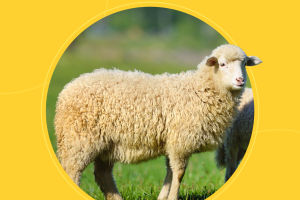Researchers from the University of New South Wales in Australia published an article in the proceedings of the National Academy of Sciences. Based on scientific observations and detailed algorithms, researchers estimated the number of more than 9700 kinds of birds in the world. The study found that there are four bird species with a population of more than 1billion, including 1.3 billion European starlings, 1.2 billion ring billed gulls and 1.1 billion barn swallows, among which the number of domestic sparrows reached 1.6 billion.
Sparrows are probably one of the most common birds. No matter which city you live in, you can always see sparrows. They are also rated as non-hazardous because of their wide distribution and stable population. Since sparrows are non-dangerous creatures, and the number is as high as 1.6 billion, why protect them?
For farmers, too many sparrows are not a good thing, because sparrows will steal food and livestock feed, which will bring great losses to farmers. But in fact, our understanding of sparrows is too biased. Some experts have shown that although sparrows feed on plant seeds and crops in adulthood, they need to supplement protein during the breeding period. At this time, they will prey on pests. When feeding their young, sparrows also need to prey on insects in large quantities, which is conducive to agricultural production.
One of the reasons why sparrows without extinction risk should be protected is that human destructive power is infinite. For example, in the 1980s, Yellow-breasted Buntings were widely distributed in Asia and Europe, and tens of thousands of them flew in clusters. However, just 30 years later, Yellow-breasted Buntings became endangered and extremely dangerous, just one step away from extinction in the wild. If sparrows are not listed as protected animals, they may also be damaged by humans like Yellow-breasted Buntings, resulting in a decline in population.
In addition, sparrows are an important link in the ecological chain. Sparrows are omnivores, in which their young feed on insects rich in protein, so sparrows will destroy a large number of pests during the brooding period, and sparrows will brood 1-2 times a year, each time catching a large number of insects, which is conducive to agricultural production. Secondly, sparrows are also prey of various raptors and predators, such as snakes, eagles, etc. They have a large population and a rapid reproduction speed. They are the food of local raptors, small carnivores, or snakes. The growth of the number of sparrows can also promote the population growth of their natural enemies.
In fact, the reason why we protect organisms that are not in danger of extinction is not only to protect themselves, but also to protect the local ecological chain. Once the local ecological chain can develop healthily, some local excessive organisms will also be controlled.

